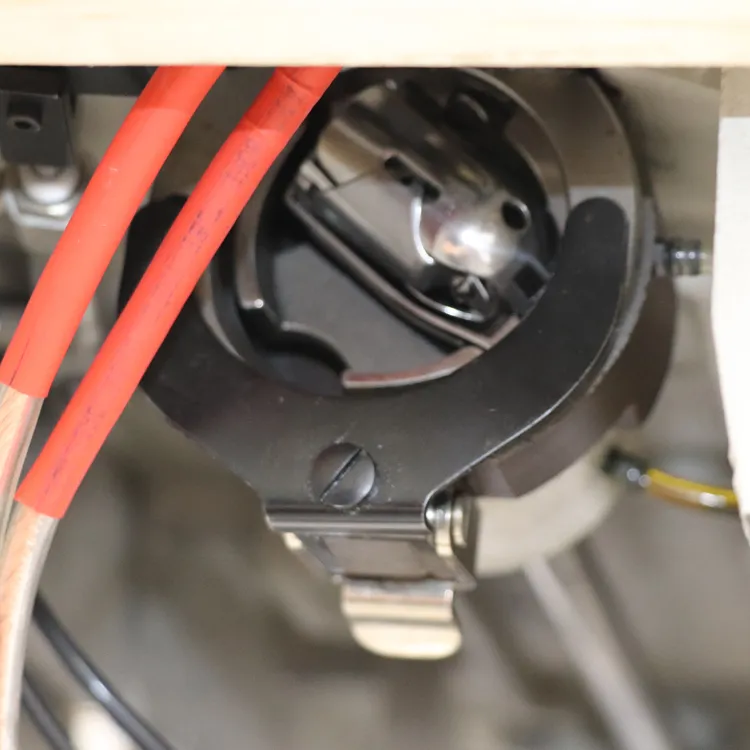Comprehensive Guide to Using Manual Lockstitch Sewing Machines for Your Sewing Projects
Manual Lockstitch Sewing Machine A Timeless Tool for Seamstresses
The manual lockstitch sewing machine has long been a staple in the world of textiles, embodying the essence of craftsmanship and creativity. Unlike modern electronic sewing machines that come with a plethora of features and functionalities, the manual lockstitch machine stands out for its simplicity, efficiency, and reliability. This article delves into the history, operation, advantages, and maintenance of the manual lockstitch sewing machine.
A Brief History
The lockstitch sewing machine was first developed in the 19th century, with Isaac Merritt Singer often credited for popularizing it through his innovative designs. This machine revolutionized the textile industry, making it possible to sew pieces of fabric together faster and more precisely than ever before. The lockstitch mechanism, which interlocks threads from the needle and the bobbin, produces a strong and durable stitch that holds well under stress, making it ideal for various sewing projects.
How It Works
The manual lockstitch sewing machine operates using a simple yet effective mechanism. The user controls the machine with a foot pedal, which allows for speed regulation and precise stitching. The needle moves up and down, piercing the fabric and drawing the top thread through, while the bobbin supplies the lower thread from beneath. This interlocking of threads creates the iconic lockstitch that is favored for its strength and versatility.
To use a manual lockstitch sewing machine, one must first prepare the machine by winding the bobbin and threading the needle. Once the fabric is placed under the presser foot, the user can start sewing by pressing the pedal. The stitch length can often be adjusted depending on the project requirements, from fine seams for delicate fabrics to longer stitches for heavier materials.
Advantages of Manual Lockstitch Sewing Machines
manual lockstitch sewing machine

One of the primary advantages of manual lockstitch sewing machines is their durability. These machines are built to last, often functioning well for decades when properly maintained. Additionally, due to their mechanical nature, they require minimal electrical power, making them suitable for areas with unreliable power supply.
Further, the simplicity of operation allows novice users to learn the basics of sewing without being overwhelmed by advanced features. This can make manual machines an excellent choice for beginners or those interested in a more traditional sewing experience. Moreover, manual machines often provide greater control over sewing speed, which can be beneficial for intricate projects requiring precision.
Maintenance Tips
To ensure the longevity and optimal performance of a manual lockstitch sewing machine, regular maintenance is essential. This includes cleaning the machine to remove lint and dust that may accumulate, particularly in the bobbin area. Lubrication of moving parts is also crucial to keep them functioning smoothly. Users should consult the machine's manual for specific maintenance instructions, which can include how often to oil the machine and any parts that should be regularly checked.
Changing needles regularly is important to avoid damage to the fabric and to maintain consistent stitch quality. It’s also advisable to use the correct type of needle for the fabric being sewn, as this will enhance both performance and stitch appearance.
Conclusion
The manual lockstitch sewing machine is a cornerstone of sewing craftsmanship, combining simplicity with effectiveness. Its ability to produce durable and high-quality stitches makes it an indispensable tool for seamstresses ranging from hobbyists to professionals. In a world increasingly dominated by technology, the manual lockstitch machine remains a cherished instrument, celebrating the art of sewing in its purest form. Whether for basic garment construction or intricate quilting projects, these machines continue to empower creators to turn their fabric dreams into reality.
-
Leather Sewing Machine: The Industrial Standard for Tough MaterialsNewsJul.18,2025
-
Sail Making Machine: Heavy-Duty Stitching for Industrial and Marine NeedsNewsJul.18,2025
-
Sling Sewing Machine: The Backbone of Heavy-Duty FabricationNewsJul.18,2025
-
Leather Sewing Machine: Precision for Heavy-Duty StitchingNewsJul.18,2025
-
Big Bag Sewing Machine: Powering the Future of Bulk PackagingNewsJul.18,2025
-
FIBC Sewing Machine: Essential Equipment for Bulk Bag ProductionNewsJul.18,2025
-
Heavy Duty Leather Sewing Machine: A Must-Have for Professional LeatherworkNewsMay.28,2025





























